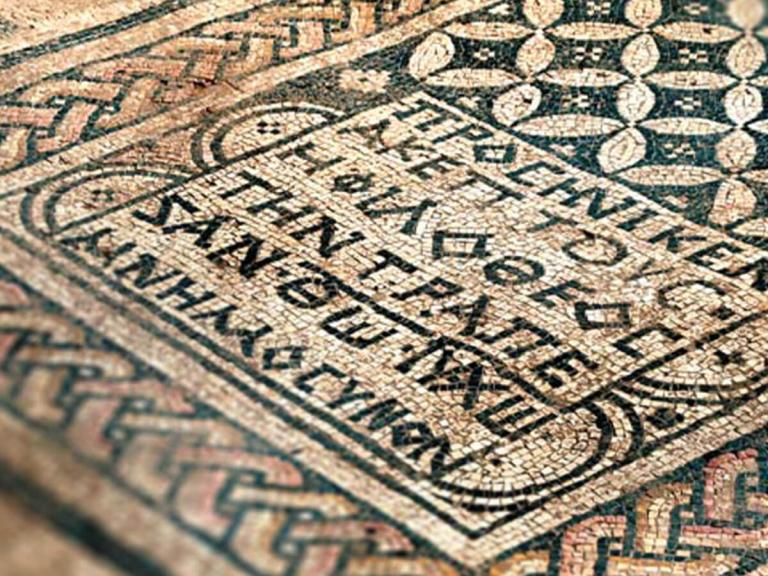
Israeli officials have announced the possibility that the ancient Christian Megiddo mosaic could be removed from its area near an Israeli prison and brought to the United States. The mosaic, located in Megiddo, Israel, was discovered in 2005 during an excavation to expand the Israeli prison. The site is significant because it is believed to be the future site of the battle of good and evil in the battle of Armageddon, as prophesied in the book of Revelation. The mosaic itself was dated by the Israel Antiquities Authority (IAA) from some time in the third century before the Roman Empire became a Christian empire. The structure is believed to be part of the oldest Christian prayer house to date. It includes a Greek inscription that translates to “to the God Jesus Christ.”
Officials have decided to continue with the expansion of the prison, meaning that the mosaic may need to be removed. Israel is reportedly considering sending the mosaic on loan to The Museum of the Bible in Washington, DC. This possibility has led to some criticism, as Cavan Concannon, a religion professor at the University of Southern California, accused the Museum of the Bible of being a “right-wing Christian nationalist Bible machine.” He added, “My worry is that this mosaic will lose its actual historical context and be given an ideological context that continues to help the museum tell its story.” The museum opened in 2017 and was founded by Steve Green, the owner of Hobby Lobby. The museum has faced some criticism for how it obtained artifacts and has had to return several after discovering they were looted.
Others, however, state that the mosaic must be moved to protect it. “This important mosaic was discovered in the excavations carried out by the Israel Antiquities Authority, and it is our foremost priority to ensure its integrity,” said Yoli Schwartz, a spokesperson for the IAA. “Leaving it in place would be irresponsible due to the large-scale mechanical earthworks that will demolish extensive parts of the prison buildings. The Israel Antiquities Authority will continue to invest efforts to make archaeology accessible to the public, and we are excited to present the Megiddo mosaic to the public worldwide.”
As for its part, Jeffrey Kloha, chief curatorial officer at the Museum of the Bible, stated that “of course, would welcome the opportunity to educate our thousands of visitors on important pieces of history such as this mosaic.” He also dismissed criticisms against the museum, saying, “To be clear: Museum of the Bible is proud to have proactively launched research and a thorough review of items in its collections. The museum initiated returns where appropriate to countries of origin without obligation to do so and encouraged other institutions to do the same.” The IAA will have the ultimate decision on the mosaic’s fate. “There’s an entire process that academics and archaeologists are involved with,” said IAA director Eli Eskozido.


